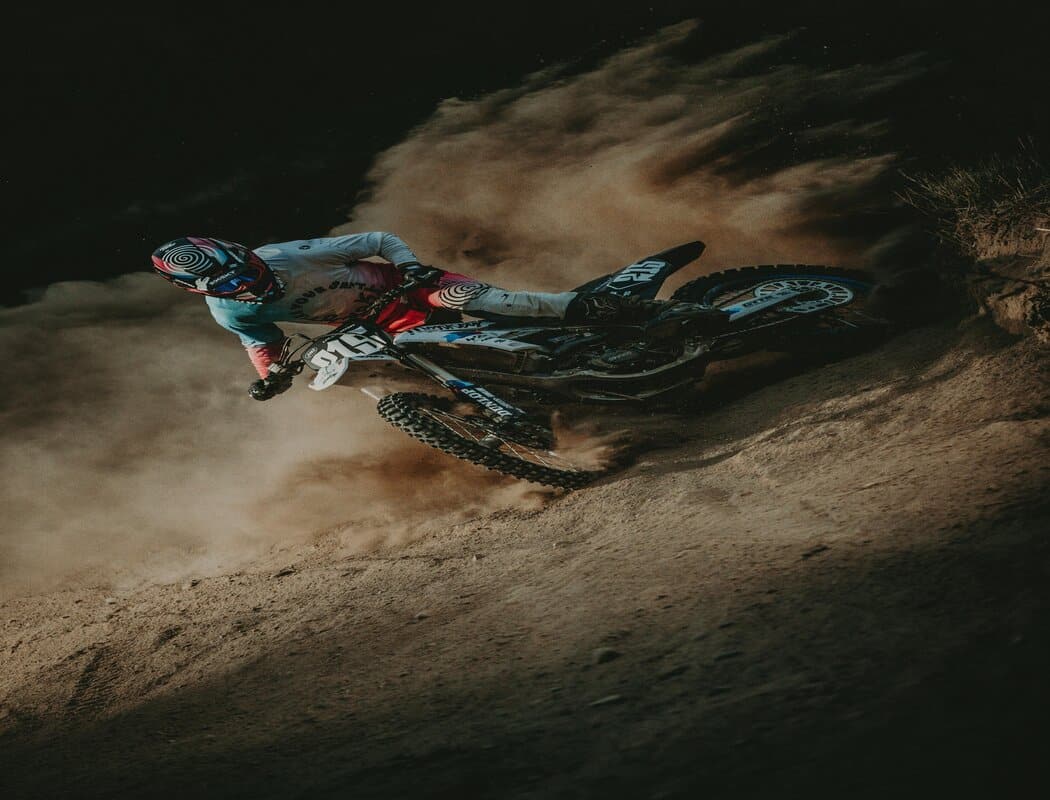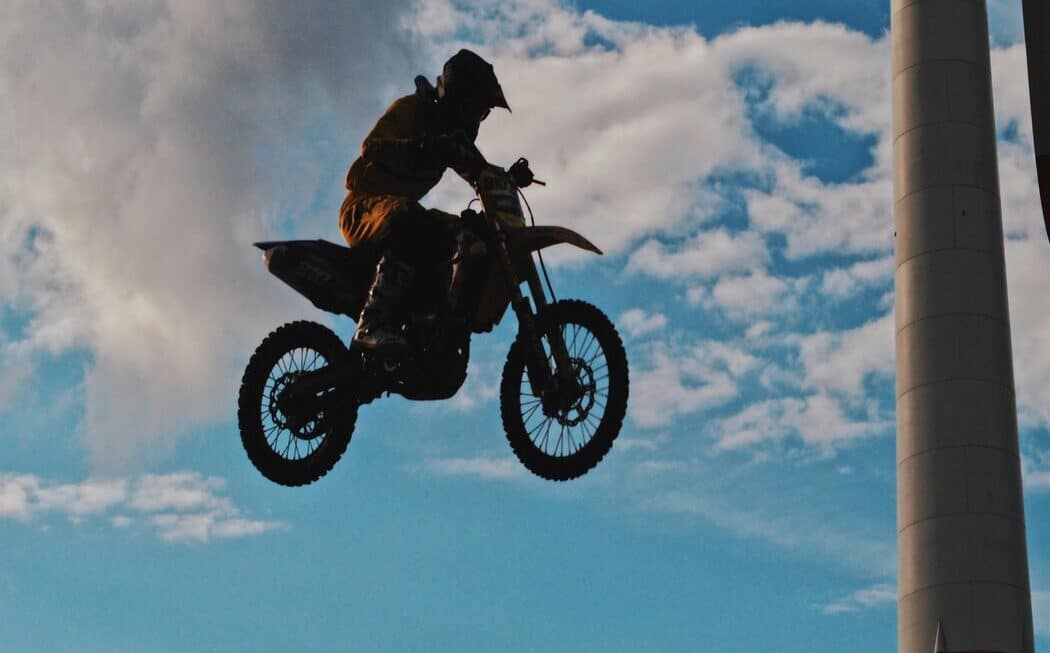Venturing into the dark with nothing but the trail ahead and the roar of your engine is a thrill that only night riding enthusiasts truly understand. For dirt bike riders, experiencing the stark contrast of the night landscape offers a unique challenge and an unmatched sense of adventure. However, this unique experience brings its own set of challenges and risks, making safety a top priority. In this comprehensive guide, we’ll walk you through everything you need to know about night riding, from essential safety tips to the gear that will keep you safe and your ride unforgettable.
The Thrill of the Unknown
Under the moon’s silver glow and the star-studded sky, the very landscape that you’ve ridden countless times takes on an otherworldly demeanor. For many of us, there’s something primal and exhilarating about moving through the night on two wheels. It’s an experience that can reignite your passion for adventure and remind you of the pioneering spirit that likely led you to off-road riding in the first place.
But adventure without caution is just recklessness, and in the world of dirt biking, the rules change after dark. It’s less about the speed and more about the serenity of your environment and the enhanced skills and focus that riding under limited visibility can foster. It’s an experience that every rider should try, but not without being well-prepared.
Safety Precautions: Seeing and Being Seen
Importance of Proper Lighting and Visibility
Your vision is your most invaluable sense when it comes to night dirt biking. It’s crucial that you can see clearly ahead to anticipate obstacles and changes in the terrain. Upgrading your bike with high-powered headlights and auxiliary lights can mean the difference between a great ride and a dangerous one. Make sure your lights are properly aligned and have the right spread pattern – wide beams for peripheral vision and narrow ones for long-distance spotting.
Protective Gear for Night Riding
A good set of protective gear is essential for any dirt bike outing, and this becomes even more crucial at night. Invest in a helmet with an anti-glare visor and goggles with clear lenses. Protection for your arms and legs should be strong and compatible with your lighting setup, with reflective patches for visibility from all angles. Don’t forget to layer up, as temperatures often drop at night.
Navigating the Night Terrain
Riding at night requires a different approach to familiar terrain. Shadows can deceive your depth perception, and the same hazards that exist during the day can be harder to spot. One of the most effective strategies is to ride slow, using the ‘stand-up’ position to absorb shocks and maintain control. This position also offers a better view of the trail in your immediate vicinity.
Challenges and Tips for Riding in the Dark
A significant challenge is adapting to reduced peripheral vision and overcoming the natural fear of the dark that can lead to tunnel vision and a lack of scanning the entire visual field. A common tip to counter this is to look where you want to go rather than at the ground, which essentially means directing your gaze to a point along the trail. This technique not only helps with balance but also allows you to spot dangers more quickly.
Adjusting to Different Lighting Conditions
If your ride takes you through diverse terrains, be prepared to adjust your lighting. An encounter with darkness can be blinding if you’re riding with a high-beam in foggy or dusty conditions, so practice quickly switching from high to low beam without losing control or speed. You should also dim your lights if you see another rider coming towards you, to avoid blinding them or causing a distraction.
Essential Gear and Accessories
Investing in high-quality gear and accessories is a non-negotiable part of night riding. When it comes to lighting, don’t skimp. Modern LED and HID lights are incredibly bright and energy-efficient, with some offering different color temperatures for varied lighting conditions. Visibility aids, like reflective stickers and vests, are also critical to ensure you’re spotted by other riders and vehicles.
High-Performance Headlights and Bike Illumination
Your headlight is not just for you to see – it’s also how others see you. Make sure your bike’s taillight and brake light are in good working order and are sufficiently bright. Tail lights should be visible from a distance and should not bleed into your headlight’s glow. Consider adding auxiliary lights that cast a wide beam to light up the sides of your path.
Reflective Gear and Visibility Aids
Be visible, especially if you’re riding in partially lit areas or around other riders. Reflective gear should be worn at all times and should be strategically placed to increase your visibility. A reflective safety flag can be a great addition to your bike, making it more noticeable when silhouetted against the night sky.
Tips for Night Riders
Riding at night can be both physically and mentally demanding. It’s essential to be well-rested and alert. The following tips can help you maintain focus and adapt to the challenges of night riding:
Strategies for Maintaining Focus and Staying Alert
Fatigue is a night rider’s worst enemy. Take regular breaks to stretch and rest your eyes. Keep yourself hydrated and energized with water and light snacks. If you’re feeling tired, slow down and keep a good distance from other riders to give yourself more time to react.
Night-Specific Riding Techniques
Practice makes perfect. Spend time riding at night in a controlled environment to get comfortable with the unique demands. Familiarize yourself with using lighting to your advantage and practice using reflective signs to judge movements and speed. Low visibility means you have to rely more on your other senses –the sound of your engine and the feel of your bike. Learn to trust these cues.
Preserving Night Vision and Avoiding Hypnosis
When riding at night, it’s important to preserve your night vision. Avoid looking directly at bright lights and give your eyes time to adjust between varying light intensities. Watch out for the phenomenon known as ‘road hypnosis’ – a trance-like state where you fixate on your light beam. To prevent this, routinely shift your focus and scan the environment.
Planning and Familiarization with Routes
It’s advisable to pre-ride routes during daylight to familiarize yourself with the specific conditions you’ll encounter after dark. Knowing the trail will help you anticipate challenging sections and reduce uncertainty. Always inform someone of your plans, including the routes you’ll be taking and your expected return time.
Importance of Riding in a Group
There is safety in numbers. Whenever possible, ride with a group. If an accident occurs, you’ll have immediate assistance. Plus, riding with others can improve visibility for the entire group and deter wildlife encounters. Make sure to maintain a safe distance to avoid collisions and to communicate effectively using hand signals or devices.
Conclusion
Experiencing the world on your dirt bike riding at night is an unforgettable experience, but it comes with a completely different set of considerations. Your safety gear and readiness shouldn’t just be on par; they should far exceed your daytime precautions. Night riding is an art, and mastering it takes time and dedication. When done right, night rides can be serene, thrilling, and a true test of your skills. Remember, the goal is not to conquer the night, but to enjoy it while staying safe and ensuring you’re prepared for whatever the trail may bring – no matter the hour.



